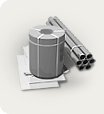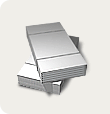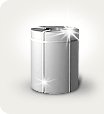The birth of plasma metal processing technology dates back to 1941, the place of its birth is considered to be the bowels of the American military-industrial complex. The technology has been known in industry since the 50s of the 20th century. Continuously developing and improving, it came to modern samples of industrial plasma cutting machines with CNC and small portable devices.
Many people already know what plasma cutting is, even at the household level. Today, you will not surprise anyone with portable plasma cutters in a small metal fabrication workshop, a point of sale of rolled metal, a utility company, and even in a home workshop. A wide selection of commercial and semi-professional plasma cutters of various capacities and prices, capable of quickly and efficiently cutting iron or non-ferrous metal with a thickness of 10 to 30 mm, is widely available by manufacturing companies. Industrial designs are high-precision plasma cutting machines with CNC, systems for supplying active and inactive gases, water, have the ability to accurately cut metal blanks with a thickness of 100 to 200 mm.
The principle of plasma metal cutting is not complicated; for a long time its technical implementation was problematic. It is based on the same blowing out of the metal melt from the cutting plane as in the gas-flame process. Only here the metal is melted by a jet of high-temperature plasma, which provides much higher temperatures and rates of melt blowing.
The technological process is as follows. An electric arc (indirect or direct, respectively) is ignited between the anode electrode and the cathode nozzle (closed plasma jet principle) or between the electrode and the cut cathode workpiece (open plasma jet). At the same time, a cutting gas (often ordinary atmospheric air from an onboard compressor) is supplied to the nozzle under pressure, which is converted by an electric arc and the aerodynamic shape of the nozzle into a narrow high-speed jet of high-temperature plasma (t = 5-30 thousand degrees C, V = 500 - 1500 m | s). Under the action of a narrowly directed high-temperature flow, the material quickly heats up and melts in a very limited working zone, from where the melt is rapidly blown out by the same high-speed gas-plasma jet.
Advantages and disadvantages of plasma cutting
The economic and technological advantages of a plasma cutter over a flame cutter or abrasive cut-off machine are undeniable. These include:
Cost-effectiveness of the process (for a portable device only electricity and atmospheric air are needed), a small amount of consumables (replaceable plasma torches - electrode plus nozzle), when they are






